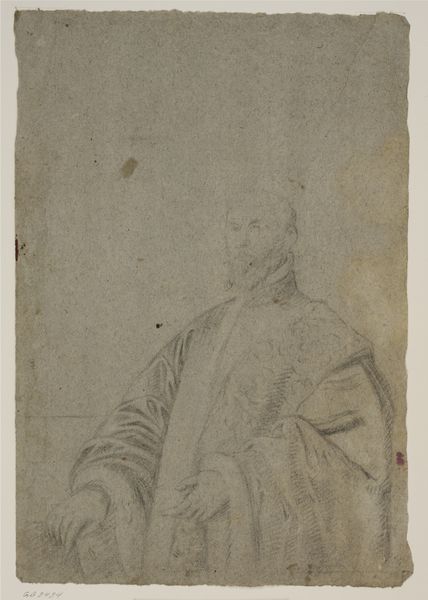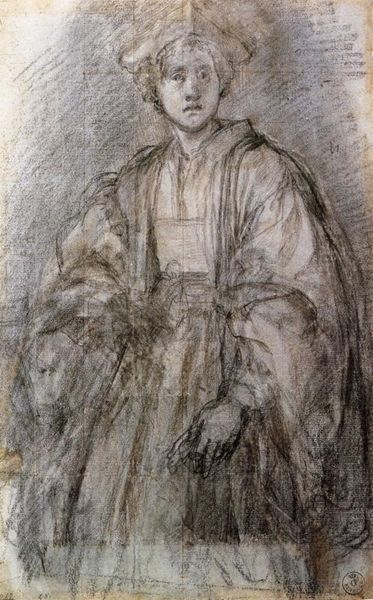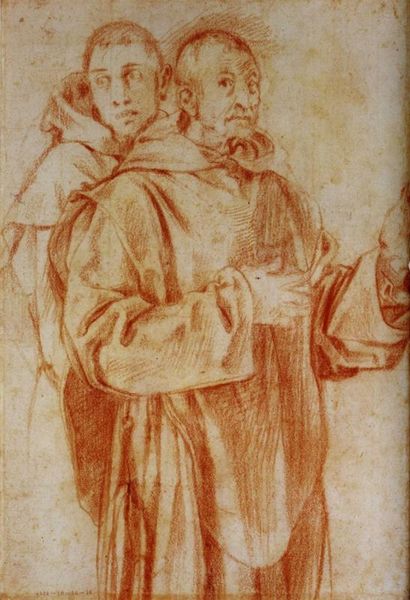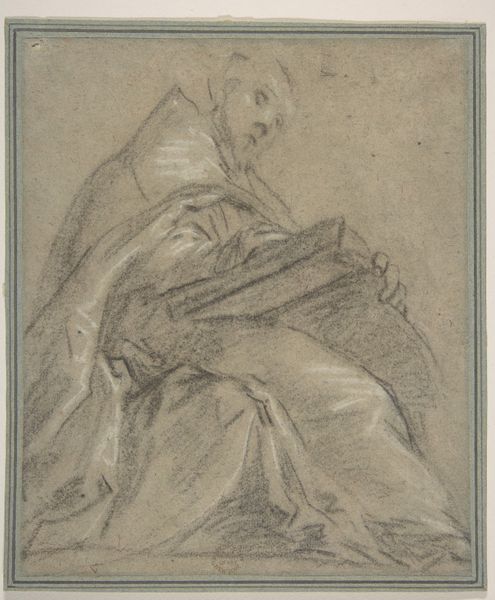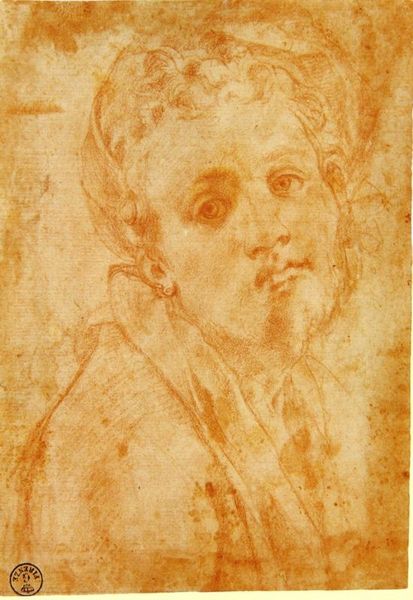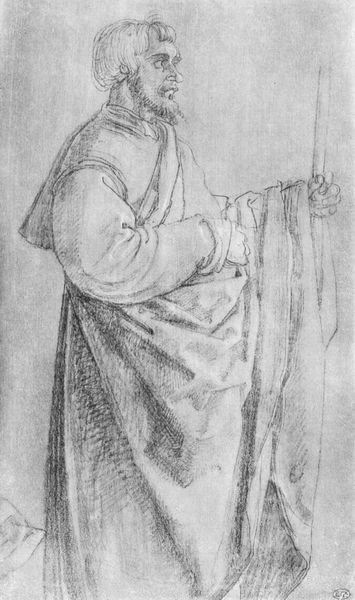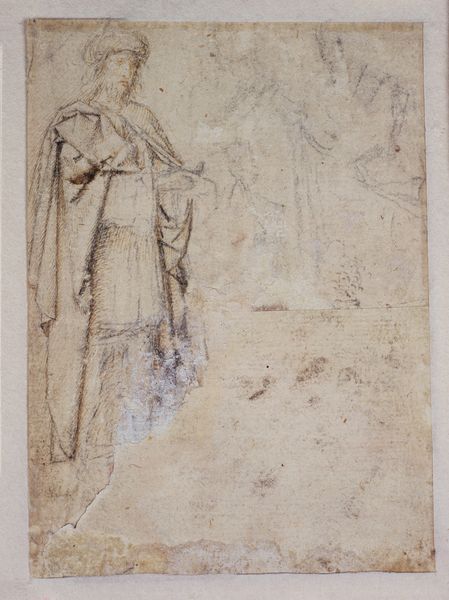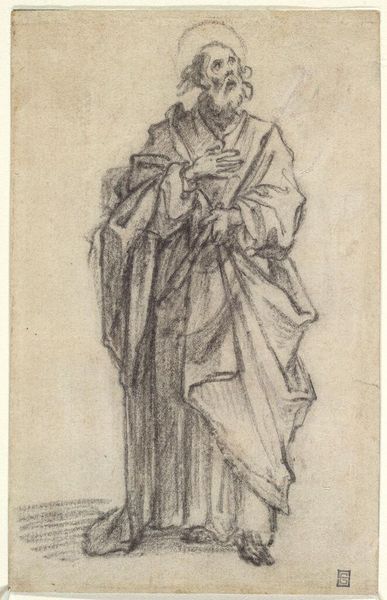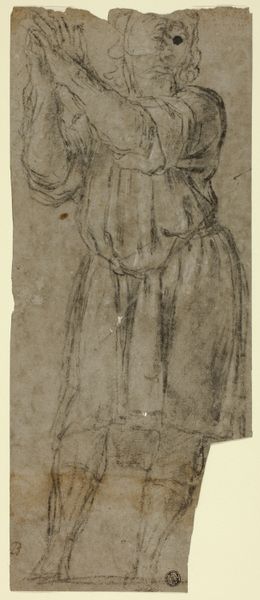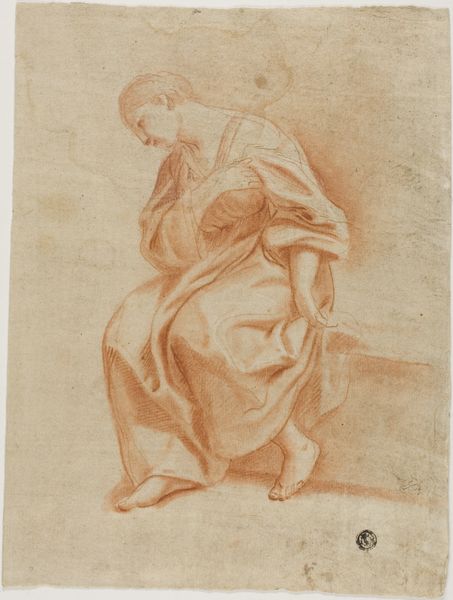
drawing, charcoal
#
portrait
#
drawing
#
charcoal drawing
#
11_renaissance
#
oil painting
#
charcoal
#
italian-renaissance
Copyright: Public domain
Curator: What we’re looking at is “Study of a Seated Bishop Reading a Book on his Lap,” a drawing by Jacopo Bassano, dating to around 1578. It’s charcoal and oil on paper. Editor: My first impression is one of quietude, almost melancholy. The loose, almost gestural charcoal work creates a sense of introspection. The limited palette amplifies the mood. Curator: It’s fascinating how Bassano, better known for his paintings, uses charcoal to explore the texture of the Bishop’s robes. Notice the layered strokes, building depth and volume. There’s a visible tension between the controlled rendering of the figure and the more chaotic, exploratory marks elsewhere. The use of oil suggests it may have been preparation for a painting, though perhaps an abandoned one. Editor: This evokes the complex relationship between the Church and intellectual life. Is this bishop finding solace in the scriptures or grappling with the political realities of his position? The very act of depicting him reading, head bowed, suggests a moment of private contemplation, removed from public performance, especially with the second indistinct charcoal sketch in the upper left. It’s a potent symbol. Curator: Absolutely. Think of the availability of materials. Charcoal was cheap and readily available – a tool for study and sketching, not necessarily considered "high art". The status of drawing itself, often seen as preparatory or less valuable, adds layers to how we consider this bishop's depiction and Bassano's artistic practice within his workshop. Editor: Right, the access to religious texts would have been almost exclusively held by elite members of the clergy. Also, think about the performativity of the male gaze even in studies like this: Jacopo Bassano must have enjoyed considerable access to this Bishop in order to make such detailed observations and sketches. This drawing becomes more than just a "study." It is the material manifestation of patriarchal privilege at a specific historical moment. Curator: I agree. And examining the source of his materials shifts the focus from solely aesthetic value to the socio-economic context in which it was made. Editor: Precisely. By situating this study within broader conversations about power, access, and representation, we move beyond conventional art historical interpretations. This reveals something fundamental. Curator: Indeed, there's more to it than meets the eye initially. It's about material, production, but it's ultimately also about those the subject can remind us of, what they tell us about their society, and maybe, even today, a little bit about ourselves. Editor: A somber work, undoubtedly offering quiet but critical meditations about patriarchal authority and the power of image making.
Comments
No comments
Be the first to comment and join the conversation on the ultimate creative platform.
